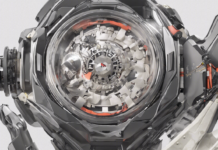Whether you are a seasoned project manager or just starting out in the field, understanding the intricacies of project design is crucial to success. Project design is the process of mapping out the various components, goals, and tasks of a project before execution, ensuring that everything is aligned with the overall objectives and deliverables. In this article, we will delve into the art of project design, providing you with tips and tricks to master this essential phase of project management.
The Importance of Project Design
Before we dive into the specifics of project design, let us first underscore why it is so critical. Project design serves as the foundation upon which the entire project is built. It establishes the roadmap, defines the scope, allocates resources, and sets the timelines. A well-designed project increases the likelihood of success by ensuring that all stakeholders are on the same page, risks are identified and mitigated, and outcomes are clearly defined. In essence, project design lays the groundwork for seamless project execution and effective monitoring and evaluation.
Key Elements of Project Design
1. Define Clear Objectives
The starting point of any project design is to establish clear and measurable objectives. Objectives serve as the guiding light throughout the project lifecycle, helping to keep the team focused and on track. Ensure that your objectives are Specific, Measurable, Achievable, Relevant, and Time-bound (SMART).
2. Identify Stakeholders
Understanding who the key stakeholders are and what their interests and influence are on the project is vital. Stakeholder analysis helps in managing expectations, gathering support, and addressing concerns that may arise during the project.
3. Create a Work Breakdown Structure (WBS)
Breaking down the project into smaller, manageable tasks is crucial for effective planning and resource allocation. A Work Breakdown Structure provides a visual representation of the project scope and helps in identifying dependencies between tasks.
4. Risk Assessment
Identifying and assessing potential risks is a critical aspect of project design. Conduct a thorough risk assessment to anticipate challenges and develop mitigation strategies to address them proactively.
5. Resource Allocation
Allocate resources, including human resources, budget, and time, based on the requirements outlined in the project design. Resource allocation ensures that the project has the necessary support to meet its objectives.
6. Monitoring and Evaluation Plan
Incorporate a monitoring and evaluation plan into your project design to track progress, measure outcomes, and make necessary adjustments along the way. Regular monitoring ensures that deviations from the plan are identified early and corrective actions can be taken.
Tips for Effective Project Design
1. Involve Stakeholders from the Beginning
Engage key stakeholders from the outset to gather insights, address concerns, and ensure buy-in. Stakeholder involvement fosters collaboration and commitment, increasing the likelihood of project success.
2. Keep It Flexible
While project design sets the foundation, it is essential to remain flexible and adaptable to unforeseen changes. Flexibility allows for adjustments to be made without derailing the entire project.
3. Communication is Key
Establish clear communication channels to ensure that information flows smoothly within the project team and with stakeholders. Effective communication fosters transparency, reduces misunderstandings, and enhances collaboration.
4. Prioritize Tasks
Identify critical path activities that are essential for project success and ensure that they are given priority during the project execution. Prioritizing tasks helps in managing resources and timelines effectively.
5. Learn from Past Projects
Gather insights from previous projects to incorporate lessons learned into the project design. Reflecting on past experiences helps in avoiding pitfalls and optimizing processes for better outcomes.
Frequently Asked Questions (FAQs)
1. What is the difference between project design and project planning?
- Project design focuses on mapping out the overall structure, objectives, and components of a project, while project planning delves into the details of how the project will be executed, including timelines, resources, and tasks.
2. How can I ensure that the project design aligns with the organization’s goals?
- Aligning project design with organizational goals involves consulting with key stakeholders, understanding strategic priorities, and ensuring that project objectives contribute to the overarching vision of the organization.
3. What role does technology play in project design?
- Technology plays a significant role in project design by facilitating collaboration, streamlining processes, and providing tools for planning, monitoring, and evaluation.
4. How do I measure the success of a project design?
- Success in project design can be measured by achieving the defined objectives, staying within budget and timelines, ensuring stakeholder satisfaction, and adapting to changes effectively.
5. What are some common pitfalls to avoid in project design?
- Common pitfalls in project design include vague objectives, inadequate stakeholder engagement, poor resource allocation, lack of risk assessment, and ineffective communication strategies.
In conclusion, mastering the art of project design is essential for successful project management. By paying attention to key elements such as clear objectives, stakeholder engagement, risk assessment, and resource allocation, and following the tips outlined in this article, you can enhance the effectiveness of your project design and set the stage for a successful project execution. Remember, project design is not a one-time task but an iterative process that requires continuous evaluation and adaptation to ensure project success.





